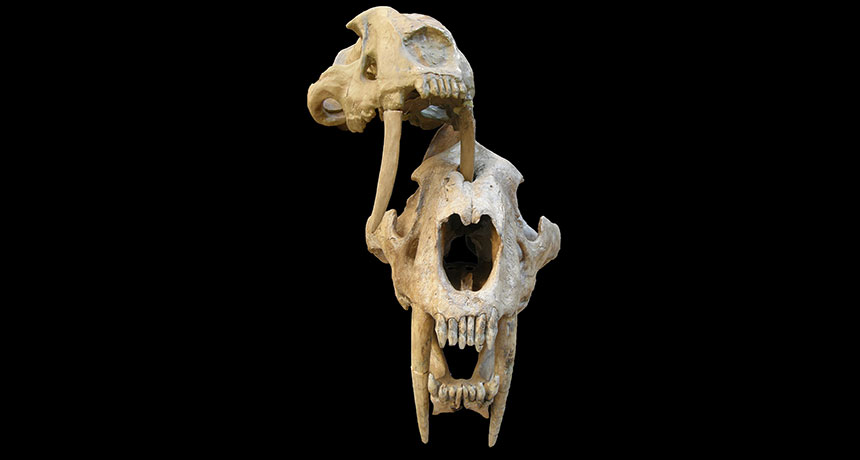Fossils reveal saber-toothed cats may have pierced rivals’ skulls
The curved canine of one ancient cat fits precisely into a hole left in the skull of another

BIG BITE The juxtaposition of these two fossil skulls shows how a large, curving canine tooth from one saber-toothed cat (Smilodon populator) neatly fits in the fossil skull of another member of the same species.
N.R. Chimento







